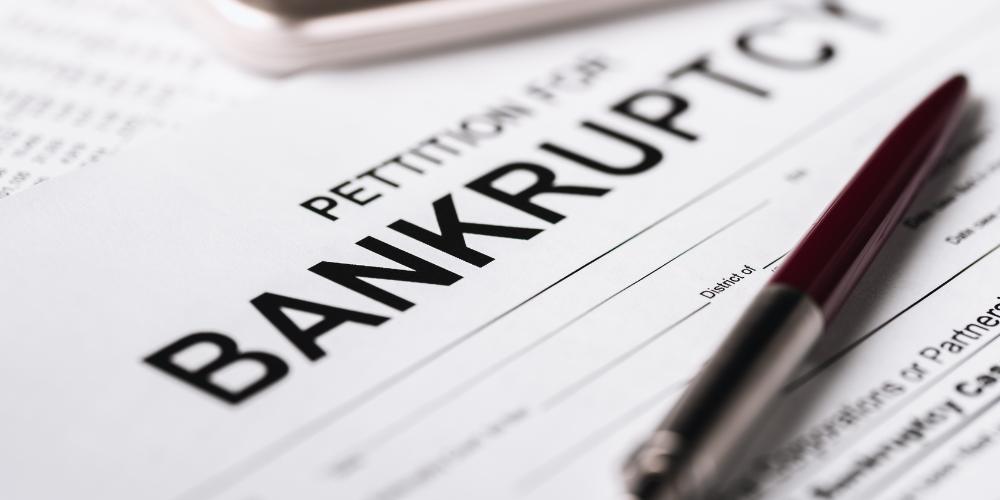California Bankruptcy Means Test
Home » Practice Areas » Orange County Bankruptcy » Chapter 7 Bankruptcy » Chapter 7 Means Test
Practice Areas
California Means Test For Chapter 7 Bankruptcy

Filing for Chapter 7 bankruptcy can provide a much-needed fresh start for individuals burdened by overwhelming debt. One of the most important steps in this process is understanding the California bankruptcy means test, which determines whether you qualify to file under Chapter 7.
This test compares your household income to the California median income and evaluates your expenses to determine eligibility. Because the criteria can be complex, having skilled legal counsel ensures that your paperwork is accurate and your case moves forward efficiently.
At Marshack Hays Wood, our experienced Orange County bankruptcy attorneys guide clients through the Chapter 7 means test with clarity and precision. If you are considering filing a Chapter 7 bankruptcy petition, schedule a free consultation with a member of our legal team by calling (949) 333-7777 or sending us a message online today.
What is Chapter 7 Bankruptcy in California?
Chapter 7 bankruptcy, sometimes called liquidation bankruptcy, requires turning over certain assets so they can be used to pay creditors. Once the process is complete, you will typically receive a discharge that wipes out qualifying unsecured debts, such as credit card debt, medical expenses, and personal loans.
However, not every debt can be discharged. Obligations like child support, alimony, most student loans, and specific tax debts will remain even after your case concludes. Understanding which debts can and cannot be discharged is an important step in deciding whether Chapter 7 bankruptcy is the right option for you.
If you are considering bankruptcy to alleviate a difficult financial situation, contact the California Chapter 7 bankruptcy attorneys at Marshack Hays Wood. Our team has substantial experience in helping people facing bankruptcy. We can answer your questions about the benefits of filing for bankruptcy in California and whether it is the right choice for you.

What is the Means Test for Chapter 7 Bankruptcy?
The Chapter 7 bankruptcy means test plays a critical role in determining whether you qualify to file under Chapter 7. This test evaluates your income and expenses to see if you have enough disposable income to repay creditors.
In the first phase, your household income is compared to the California median income for a family of your size. If your income falls below that level, you typically qualify for Chapter 7. If it is higher, the process moves to a second phase, which takes into account allowable expenses and financial obligations to determine whether you still meet the requirements.
Chapter 7 Means Test California
The California bankruptcy means test is divided into two parts.
- First portion: Your household income is compared to the California median income for families of the same size. If your income is below the median, you automatically qualify for Chapter 7 bankruptcy. If your income is higher, you are not automatically disqualified. Instead, the bankruptcy court will take a closer look at your financial situation.
- Second portion: A detailed formula is applied to determine whether you have enough disposable income to repay your debts. This requires completing the Chapter 7 Means Test Calculation Form, which includes your income and expense information. To complete the form, you will need data from both your personal records and government sources, including the U.S. Census Bureau and the Internal Revenue Service (IRS). The U.S. Trustee Program website provides access to the required Census and IRS figures.
Under certain circumstances, individuals can qualify for Chapter 7 bankruptcy without taking the means test. Disabled veterans with debts incurred primarily during active duty or homeland defense activities may qualify for Chapter 7 without taking the test. Likewise, individuals with primarily non-consumer debts, such as business owners whose obligations are mostly tied to business expenses, are exempt.
What is the Income Limit for Filing Chapter 7 in California?
There is no universal income limit for filing Chapter 7 bankruptcy in California. Income limits vary depending on household size. Additionally, income limits change periodically, so it is important to seek updated data.
Chapter 7 Bankruptcy California Income Limits 2025
According to the U.S. Census Bureau, the California median income by family size for cases filed on or after May 15, 2025 is as follows:
- An annual income of $76,190 for 1-person households.
- An annual income of $99,936 for 2-person households.
- An annual income of $112,536 for 3-person households.
- An annual income of $130,845 for 4-person households.
For households larger than four people, add an additional $11,100 per person. Your household can include both family members and non-family members. Generally, you should count any individuals you support, depend on, or are otherwise financially connected to.

How Do I Know If I Qualify For Bankruptcy Chapter 7?
Passing the California means test shows that you do not have the disposable income necessary to pay your debts. However, this is only one step towards qualifying for Chapter 7 bankruptcy. While the means test is significant, it is also important to understand the other qualifying factors required by California bankruptcy laws.
In addition to assessing income and expenses, the court will consider previous bankruptcy filings. You may not file for Chapter 7 bankruptcy if you have received a Chapter 7 discharge within the past 8 years. A Chapter 7 bankruptcy case dismissal within the past 180 days for fraud, bankruptcy abuse, or court order violation also disqualifies you from filing.
Before filing for bankruptcy, you will also need to complete a credit counseling course from an approved agency. You must also meet residency requirements by residing in California for at least 91 days before filing.
Chapter 7 Means Test (California) Calculator
How to Calculate Current Monthly Income for the Means Test
To calculate a debtor’s current monthly income (CMI) for the means test, follow the steps listed below:
- Gather household income information for the past six months leading up to your bankruptcy filing.
- Calculate your average monthly gross income by adding up all income sources.
- Annualize your gross income by multiplying it by 12.
- Compare your annualized income to the state’s median income for a household of your size.
- If your income is below the median, you pass the Means Test and may be eligible for Chapter 7.
- If your income exceeds the median, divide your annualized income by 12 to get your monthly income.
- Deduct allowable expenses from your monthly income to calculate disposable income.
It is important to include all applicable forms of income in your CMI calculations. In addition to your wages, you should include income from other sources such as rental properties, interest, unemployment compensation, retirement plans, etc. If you plan to file a joint bankruptcy case as a married couple in California, your spouse’s income must be included as well. Certain sources of income, such as payments received under the Social Security Act, are excluded from means test calculations.
When completing the means test, it is important to know not only which types of income to include but also which household expenses can be deducted. Accurate deductions can make a significant difference in determining whether you qualify for Chapter 7 bankruptcy. Deductible expenses may include mandatory employment costs (such as union dues, uniforms, or retirement contributions), certain healthcare expenses (like health or disability insurance), child care costs, alimony, and child support payments.
Because bankruptcy is a sensitive process, even small mistakes in calculating income or expenses can lead to serious delays in obtaining debt relief. At Marshack Hays Wood, our experienced bankruptcy lawyers understand the nuances of the Bankruptcy Code and can ensure your paperwork is accurate and complete. We guide you through determining which income and actual expenses apply to your case, helping you move toward financial stability with confidence.

FAQs About Filing Chapter 7 in California
According to the latest data provided by the Census Bureau, the 2025 median household income in California is $76,190 for a one-person household. This benchmark is used in the Chapter 7 bankruptcy means test to determine eligibility. Median income figures are adjusted for household size and updated regularly to reflect economic conditions. Actual income levels may vary across California depending on factors such as cost of living, location, and household size.
The low-income thresholds are region-specific due to California’s diverse economic landscape, meaning what is considered low income in one area may differ in another area. Generally, low income is defined as earnings that fall significantly under the state’s median income level, often quantified as less than 80% of the median.
The table below illustrates the low-income levels for Orange County households as of 2025.
Number of People Per Household: | 1 | 2 | 3 | 4 | 5 | 6 | |
Acutely Low Income | 14,350 | 16,400 | 18,450 | 20,500 | 22,150 | 23,800 | |
Extremely Low | 35,550 | 40,600 | 45,700 | 50,750 | 54,850 | 58,900 | |
Very Low Income | 59,250 | 67,700 | 76,150 | 84,600 | 91,400 | 98,150 | |
Low Income | 94,750 | 108,300 | 121,850 | 135,350 | 146,200 | 157,050 | |
Median Income | 95,600 | 109,300 | 122,950 | 136,600 | 147,550 | 158,450 | |
Moderate Income | 114,750 | 131,100 | 147,500 | 163,900 | 177,00 | 190,100 | |
The full list of counties can be found here:
https://www.hcd.ca.gov/sites/default/files/docs/grants-and-funding/income-limits-2025.pdf
Bankruptcy options are available to people of all income levels. While an income limit applies to Chapter 7 bankruptcy, no such limit applies to Chapter 13 bankruptcy. If your income disqualifies you from filing Chapter 7, you may still qualify for a payment plan under Chapter 13.
An income over the Chapter 7 filing limit, recent bankruptcy filings within the past 8 years, and bankruptcy case dismissal within the past 180 days can disqualify you from filing Chapter 7 bankruptcy. Additionally, you may be disqualified if you do not meet residency requirements or fail to complete credit counseling.
There is no minimum or maximum debt amount that applies to Chapter 7 bankruptcy. Whether or not you can file is based on your income and your ability to pay the debt.
If your income is below the California median income or if the means test shows that you do not have sufficient disposable income to pay your debts, you are likely eligible. Again, eligibility for Chapter 7 bankruptcy also depends on other factors, such as whether you have previously filed for bankruptcy, have recently had a bankruptcy case dismissed, and whether you have completed the required credit counseling. Our Chapter 7 bankruptcy attorneys at Marshack Hays Wood LLP can assess your individual case (or joint case) and help you determine if you qualify for Chapter 7 in Orange County, California.
How To File Bankruptcy Chapter 7 in California
Filing for Chapter 7 bankruptcy can be overwhelming, especially when you must complete the California bankruptcy means test and follow strict filing procedures. Fortunately, Orange County residents can rely on the team at Marshack Hays Wood for clear guidance and effective representation at every stage of the process.
The first step is gathering the necessary financial data and forms. This information is crucial both for completing the means test and later when preparing official bankruptcy forms. You must also take an approved credit counseling course within 180 days before submitting your petition.
When you submit your petition, you may be required to pay a filing fee. However, individuals with income below 150% of the federal poverty guidelines may qualify for a waiver.
Once filed, the court will appoint a trustee to review your case. You must provide documentation such as tax returns and bank statements no later than one week before your 341 meeting of creditors. Before attending this meeting, you are also required to complete an approved debtor education course focused on debt management.
At your 341 meeting, your trustee (and possibly your unsecured creditors) may ask questions about your financial situation. If the process is completed successfully, you will receive your Chapter 7 bankruptcy discharge.

Call the Orange County, California Chapter 7 Bankruptcy Lawyers at Marshack Hays Wood Today
It is highly recommended to work with a bankruptcy attorney when completing the means test and required paperwork. Errors in reporting income, deductible expenses, or completing forms may prevent you from being able to pass the means test or even have your petition denied. Such mistakes can lead to costly delays and a number of additional legal issues. At Marshack Hays Wood, our experienced Orange County Chapter 7 bankruptcy lawyers ensure your petition and forms are accurate and properly filed the first time.
If you are struggling with overwhelming unsecured debt, weighing debt settlement options, or need guidance with the California bankruptcy means test or any other aspect of bankruptcy law, our dedicated legal team is ready to assist you every step of the way.
Contact a Chapter 7 means test attorney at Marshack Hays Wood to take the first step toward a fresh financial start. Call (949) 333-7777 or use our secure online contact form.
READY TO GET STARTED?
At Marshack Hays Wood, our attorneys provide the legal support you need to move forward with confidence. Let us help you take the first step toward financial stability.
